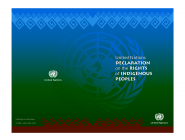Construction Department
After the uprising of 1991 and the withdrawal of Baghdad regime from the secured no-fly region in northern Iraq, the AAS-I and other non-governmental organizations (NGOs) had a direct and effective role in the reconstruction of the villages ruined and destroyed in 1970s and 1980s in Saddam Hussein's notorious Al-Anfal campaign.
Our Society had an effective role in the reconstruction of the villages by implementing civil building projects in different parts of the region. The Society undertook constructional projects such as rebuilding the houses, irrigation channels, water distributing networks, recasting houses roofs, building churches, etc.
The Construction Department consists of engineers specialized in building and construction works. They perform periodic visits to the villages to prepare estimates regarding the building projects needed to be implemented. The estimates are submitted to friendly and supporting institutions and organizations where financial support is secured; once the project has been funded, the Construction Department immediately begins implementation of the project, with periodic update reports regarding the progress of the work.
After the fall of the Saddam Hussein regime in 2003 the duties of the Construction Department extended to include the regions of the Nineveh plain. This area had received absolutely no support or care from the toppled regime. We started work immediately and directly upon entering the area, distributing urgent support and aid with food, medicine, etc. The need for several vital service projects was identified and accomplished.
The Construction Department implemented several projects in different regions in northern Iraq, especially in the villages of the Dohuk province, as well as in the Nineveh Plain since 2003 till now, where the AASI got the support from many organizations, especially from USAID, which has supported the fund of three projects of changing the Old Water Networks in Talkief and Batnaya and Tillesquf, and establishing a school in Talkief.



